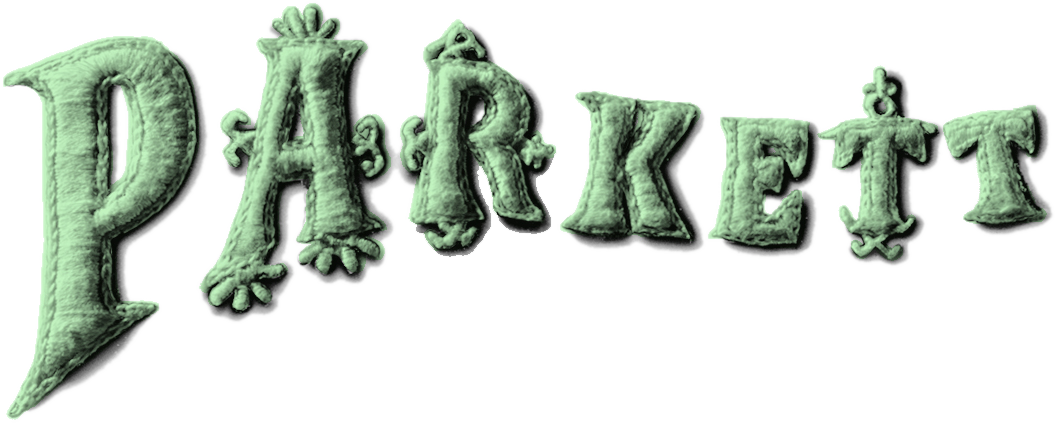Parkett Vol. 87 - 2010 | Katharina Fritsch, Annette Kelm, Kelley Walker, Cerith Wyn Evans
Katharina Fritsch
Read a selected text (PDF)
View edition
Annette Kelm
Read a selected text (PDF)
View edition
Kelley Walker
Read a selected text (PDF)
View edition
Cerith Wyn Evans
Read a selected text (PDF)
View edition
Insert Allen Ruppersberg view insert (PDF)
Spine Josh Smith
Miscellaneous
Adolf Dietrich by Richard Phillips (PDF)
U.S. & Canada
Please place your order through our distributor D.A.P. here.
Browse Selected Texts and more on the Collaboration Artists
Artist Insert
Editorial
The artists presented in this issue of Parkett cultivate a highly sophisticated aesthetic as they come to terms with the entrenched meanings of forms and images. Demonstrating a remarkable autonomy and bringing to light hidden potential, their work can be liberating and awe-inspiring but equally disturbing and unsettling. Katharina Fritsch, Annette Kelm, Cerith Wyn Evans and Kelley Walker each chart highly distinctive territory of their own and yet, in the pages of this issue, we come across sparks that jumpstart moments of mutual contact.
Twenty years ago Parkett already devoted an issue to Katharina Fritsch as a Collaboration artist. She has since created numerous sculptures of hypnotic impact, some united as ensembles in space that enter into a dialogue with large-format screenprints—luminously immaterial images. At times, her colors and images seem to lead a life of their own, which does not, however, prevent them from clashing with each other in a fashion as sublime as it is ordinary. The extent to which her works address our collective fantasies is pointed out by Jean-Pierre Criqui, whose study of the role animals play in this oeuvre reveals a “conjunction between interiority and otherness”. It is not color but light that Cerith Wyn Evans bridles, ignoring all convention in using it to communicate “messages.” He even exploits the universe as his picture support, shooting powerful spotlights into the night sky to create a staccato of light that beams literary quotations in Morse code. Evans’ edition for Parkett consists of a wall-mounted equal sign that radiates the warm, indeed hot, energy of wishes in a ploy to enrich the coolness of the neon idiom. In Annette Kelm’s photographs, viewers will be disappointed if they seek to rely on “classification by means of aesthetic and conceptually defined recognition factors” or engage in a “quest for content and narrative,” as Beatrix Ruf puts it in her essay titled “Twisting and Turning”. The singular and self-contained beauty of Kelm’s photographed images emerges—like painting—in processes of composing, selecting and rejecting.
In his pictures, objects, and installations, Kelley Walker works with the patently predefined meanings of found images and materials—so much so, that his artist colleague and writer Glenn Ligon speaks about Kelley Walker’s “Negro Problem”. It is a “race problem”—in quotes—an obsession that takes on a cultural, American dilemma. Describing in detail how Walker plans an exhibition, Johanna Burton inquires into the way in which the artist as “pioneer” renders “ostensibly ‘nonnormative’ histories, desires, and aesthetics central and visible”. This volume also features an Insert project by Allen Ruppersberg.
Table of Content
The Transatlantic Cable by Marina Warner
Katharina Fritsch
From Out There to Down There by Jessica Morgan
The Dream is About You: Katharina Fritsch and the Laws of Animal Attraction by Jean-Pierre Criqui
Kelley Walker
Bringing it Back Alive! By Johanna Burton
Kelley Walker’s Negro Problem by Glenn Ligon
New, Uncertain: Speculations Around the Work of Kelley Walker by Antek Walczak
Cerith Wyn Evans
Moon Turned a Fire Red by Michael Archer
Under the Sign and in the Spirit of a Stoa by Jan Verwoert
Follow This, You Bitches by Pablo Lafuente
Annette Kelm
Twisting and Turning by Beatrix Ruf
Toward a Minor Photography: Annette Kelm’s Discrete Cosmologies
Open Source by Stefanie Kleefeld
Allen Ruppersberg, Insert
Pictures Generation Redux by Philipp Kaiser






